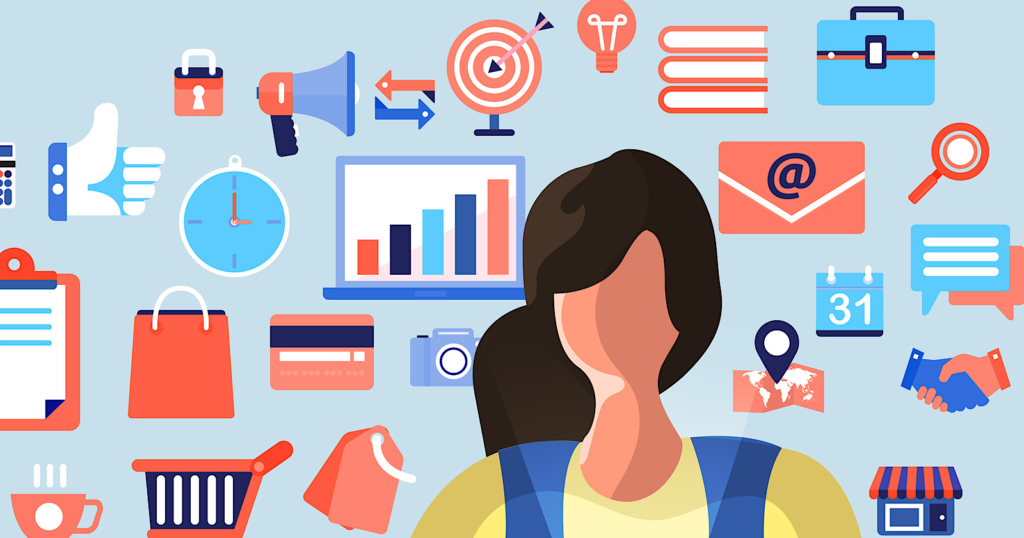Introduction
The digital age has revolutionized the way consumers interact with brands make purchasing decisions and express loyalty. From the rise of smartphones The Evolution of Consumer Behavior in the Digital Age to social media influence digital tools have not only changed how consumers shop but also how they think feel and engage with the marketplace. To succeed in this new landscape businesses must become customer obsessed data informed and digitally agile. In doing so they won’t just survive the digital age they’ll lead it.
This article explores the transformation of consumer behavior in the digital age its causes trends and implications for businesses worldwide. Whether youre a marketer business owner or tech enthusiast understanding this shift is essential to staying competitive in todays economy.
Understanding Consumer Behavior in a Traditional Context
Before digital technology took over consumer behavior followed more predictable linear patterns.
Key Characteristics of Traditional Consumer Behavior:
- Decisions driven by brand trust and word of mouth
- Shopping limited to physical stores
- Influence from TV radio and print ads
- Limited access to product reviews or comparisons
- High customer loyalty to established brands
While effective in its time this model was slower and less informed compared to today’s digitally empowered consumer.
Digital Disruption Begins
The early 2000s marked the beginning of widespread internet adoption. With the rise of e commerce platforms like Amazon and eBay consumers started shifting online.
Digital Milestones That Changed Behavior
- 1995–2005: E-commerce emergence
- 2007: Introduction of the iPhone
- 2010–2020: Mobile-first revolution and rise of social media
- 2020–2022: COVID-19 accelerates online consumption
These technological shifts brought transparency convenience and speed forever altering how consumers engage with brands.
Key Changes in Consumer Behavior

From Passive to Empowered Consumers
Consumers now research before purchasing compare multiple brands read online reviews, and demand value.
The Rise of Omnichannel Shopping
Today buyers move fluidly between channels browsing in store buying online or vice versa. Brands must deliver consistent experiences across platforms.
Increased Demand for Personalization
Consumers expect personalized content recommendations and services. AI driven personalization is a major differentiator.
Mobile-First Mindset
Most purchases and research happen on smartphones. Brands that dont optimize for mobile risk losing relevance.
Trust in Peer Reviews Over Ads
Consumers trust UGC (User-Generated Content), influencer reviews and customer feedback more than traditional advertisements.
Digital Technologies Shaping Behavior
Mobile Apps and Websites
Apps like Amazon Uber and TikTok make it easier for users to shop engage and transact on the go.
E-commerce Platforms
Shopify WooCommerce and others empower businesses to sell 24/7. Consumers expect fast delivery free returns and flexible payment options.
Artificial Intelligence and Chatbots
AI improves customer service with chatbots predicts preferences and offers tailored recommendations.
Big Data and Predictive Analytics
Brands can now analyze behavior at scale and deliver data driven experiences.
Social Media Influence
Instagram YouTube and TikTok have transformed how products are discovered reviewed and consumed.
Psychological Shifts in Consumer Behavior
The Instant Gratification Era
Digital users expect instant access to products services and support. Waiting is no longer acceptable.
Decision Fatigue
With endless choices online consumers face decision overload. Brands must simplify navigation and guide users through funnels.
Emotional Branding
Consumers buy from brands that align with their values and emotions. Purpose-driven marketing is more effective than product centric pitches.
Vocal and Empowered
Thanks to reviews and social media unhappy customers can publicly criticize brands. Transparency and ethical practices are now business imperatives.
Generational Differences in the Digital Age

Gen Z and Millennials
- Highly digital-native
- Trust influencers more than celebrities
- Value authenticity and transparency
- Prefer short-form, visual content (e.g., Reels, TikToks)
Gen X and Boomers
- Increasingly adopting digital tools
- Still value customer service and loyalty programs
- Prefer email Facebook and websites over newer platforms
Brands must create tailored strategies for each demographic.
Social Commerce and Influencer Impact
What is Social Commerce
Social commerce is the buying and selling of products directly through social media platforms like Facebook Instagram and TikTok.
Influencer Marketing
Influencers have massive sway particularly in niches like beauty fashion and tech. Micro influencers (under 100K followers) often deliver higher engagement and trust.
Case Study Kylie Cosmetics
Kylie Jenner leveraged her Instagram following to build a billion dollar makeup brand without traditional marketing.
Ethics Privacy and Transparency
With great data comes great responsibility.
Consumer Concerns:
- Data privacy breaches (e g Facebook Cambridge Analytica)
- Misleading advertising or fake reviews
- Over-personalization leading to creepy targeting
Ethical Branding Is Non-Negotiable
- Use data responsibly
- Be transparent in messaging
- Offer opt-in/out options for data collection
Trust is a currency in the digital age.
The Role of AI and Machine Learning
AI is revolutionizing how businesses understand and react to consumer behavior.
Key Applications:
- Behavioral targeting for ads
- Personalized recommendations (Netflix Amazon)
- Dynamic pricing models
- Real-time customer support via chatbots
As AI continues to evolve predictive analytics will dominate marketing strategies.
Post-Pandemic Consumer Behavior Trends
COVID-19 changed consumer behavior permanently:
Key Shifts:
- Surge in online grocery and food delivery
- Growth of telehealth and digital education
- Preference for contactless payments and services
- Increased focus on health wellness and sustainability
Consumers now value convenience hygiene and safety more than ever.
Adapting Business Strategies for the New Consumer
Key Strategies for Brands:
- Invest in data-driven marketing
- Build an omnichannel presence
- Deliver personalized customer journeys
- Focus on CX (Customer Experience)
- Embrace agility and rapid experimentation
- Prioritize brand ethics and values
Future of Consumer Behavior
What’s next?
Emerging Trends:
- Voice commerce (e g Alexa and Google Assistant purchases)
- AR/VR shopping experiences
- Subscription-based models (streaming meal kits SaaS)
- Sustainable consumption preferences
- Decentralized marketplaces (Web3 blockchain)
Consumers will increasingly expect personalized ethical and immersive brand interactions.
Conclusion
The evolution of consumer behavior in the digital age is far from over. As technology advances so do consumer expectations, preferences and demands. The Evolution of Consumer Behavior in the Digital Age. Brands that listen adapt and innovate will thrive. Those that cling to outdated models risk extinction.
To succeed in this new landscape businesses must become customer obsessed data informed and digitally agile. In doing so they wont just survive the digital age they’ll lead it.

